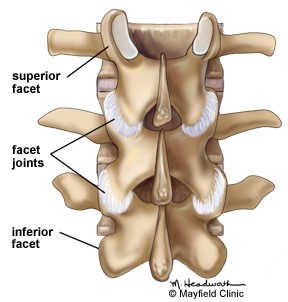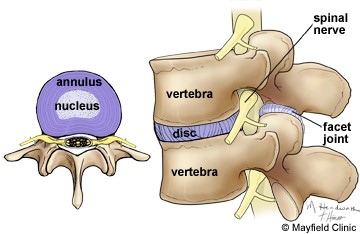Acute Wry Neck

Has anyone ever woken up one morning and your neck is sore and feels like it’s stuck in one position? I for one have definitely experienced this, so don’t worry, you are not alone. I can completely understand how you may have felt or what you may be experiencing.
Firstly, this type of pain typically happens all of a sudden or the onset just comes out of the blue, hence the reason it is often termed “Acute” wry neck. It is associated with neck pain and stiffness, which is often accompanied by muscle spasms of the surrounding neck muscles. This causes neck pain and restriction of your neck to turn through its full range of motion.
Wry neck is a very common condition also referred to as torticollis, which can be quite debilitating as it can cause constant severe pain with the smallest neck movements. Approximately 70% of the population experiences an episode of neck pain at some point in their lives. Anyone can get a wry neck, but it typically occurs in young people between 12 and 30 years of age. It can be very worrisome for people as you quickly realize it is difficult to carry out your daily routine or activities when you have a lack of range of motion within your neck. Good news is that acute wry neck can be successfully treated in a short period of time.
Wry neck is a very common condition also referred to as torticollis #performbetter @pogophysio Share on XSigns and Symptoms
- Pain: Onset of pain is sudden. Pain is commonly located in the middle or side of the neck that is affected. The pain is localised to the neck area and does not extend past the shoulder joint.
- Location: Usually symptoms are felt on one side of the neck, as this is a protective reaction of the body to safeguard the neck.
- Loss of Range of Movement: You will find your neck is fixed in an abnormal position (most frequently in a flexed forward and rotated position). The side that your head will be rotated towards will often be away from the side of pain. All movements aggravate your pain as your facet joints are likely to be in a locked position causing irritation to the joint and therefore causing pain.
- Muscle Spasms: Your surrounding neck muscles for example, sternocleidomastoid, scalenes, levator scapula have tightened or spasmed in response to the facet joint irritation. This in turn limits your neck range of motion.
Causes of Wry Neck
The exact cause of wry neck is not fully understood, but is thought to be caused by the result of a minor injury to the neck or simply caused by sleeping with the neck in an awkward position, uncomfortable pillows or waking up suddenly in the middle of the night. Our necks are made up of several vertebras, intervertebral discs and joints. The small swivel joints that allow for smooth gliding movements and turning are called facet joints. Through diagnostic imaging the cause of wry neck seems to be due to an injury or irritation of one or more of the facet joints. The first theory is that the facet joints become locked or jammed, like a door jamming on its hinge. Therefore, a locked facet joint is the most common cause of acute wry neck, causing pain and the protective muscle spasms throughout the neck.


The second theory of wry neck is due to discogenic irritation. Between our vertebrae we have spinal discs which help absorb shock and stress to the spine. These intervertebral discs can sometimes bulge or tear under stress almost like a small sprain, therefore causing inflammation and swelling putting pressure on the surrounding structures and nerves within the neck. Since there are many nerve endings around the spine, this can explain why movement can be very painful. Movement is more limited by pain, not mechanically blocked as in the facet theory. This type of wry neck usually comes on over a period of time (more gradual onset) and is not as sudden. It can be caused by factors such as neck stiffness, poor posture and biomechanics. Symptoms of discogenic wry neck can radiate into the arm and occasionally people may experience pins and needles or numbness. If you experience these paraesthesias, seek medical assistance immediately.
Treatment & Prognosis
Great news is that acute wry neck can be easily treated with the help of some home conservative treatments and physiotherapy. Most acute wry necks can be unlocked pretty much immediately. It can be resolved over 24-48 hours with some residual symptoms lasting up to a week. There are usually no risks or complications, but keep it mind neck problems can return so it is important to strengthen the neck muscles and normalize range of motion to prevent it in the future.
As mentioned previously that acute wry necks can be quite disabling, it is best to try and get treatment within the first 12 hours of waking up with this issue. In the meantime while you are waiting for your appointment, I would strongly advice placing heat around your neck and the surrounding muscles.
If you have any questions please feel free to leave me a comment. Like I said earlier, I’ve experienced this is the past and it is not so nice, but it can be easily resolved with the help of some physiotherapy and early intervention.
Natasha Chan (APAM)
Physiotherapist

References
Australian Doctor (2003). Acute Wry Neck. Retrieved January 22, 2017, from http://www.nevdgp.org.au/info/murtagh/pdf/030912AccuteWryNeck.pdf
Brukner, P. and Khan, K. (2007). Clinical Sports Medicine (3rd ed.) McGraw-Hill, Sydney.
Counsell, C., Sinclair, H., Fowlie, J., Tyrrell, E., Derry, N., Meager, P., … Grosset, D. (2016). A randomized trial of specialized versus standard neck physiotherapy in cervical dystonia. Parkinsonism & related disorders., 23, 72–9. Retrieved from https://www.ncbi.nlm.nih.gov/pubmed/26723272
Wry neck. (2015, August 4). Retrieved January 22, 2017, from http://physioworks.com.au/injuries-conditions-1/acute-wry-neck
Wry Neck (Acute Torticollis). (2014). Physio, C. CQ Physio. Retrieved January 22, 2017, from https://cqphysio.com.au/296/








